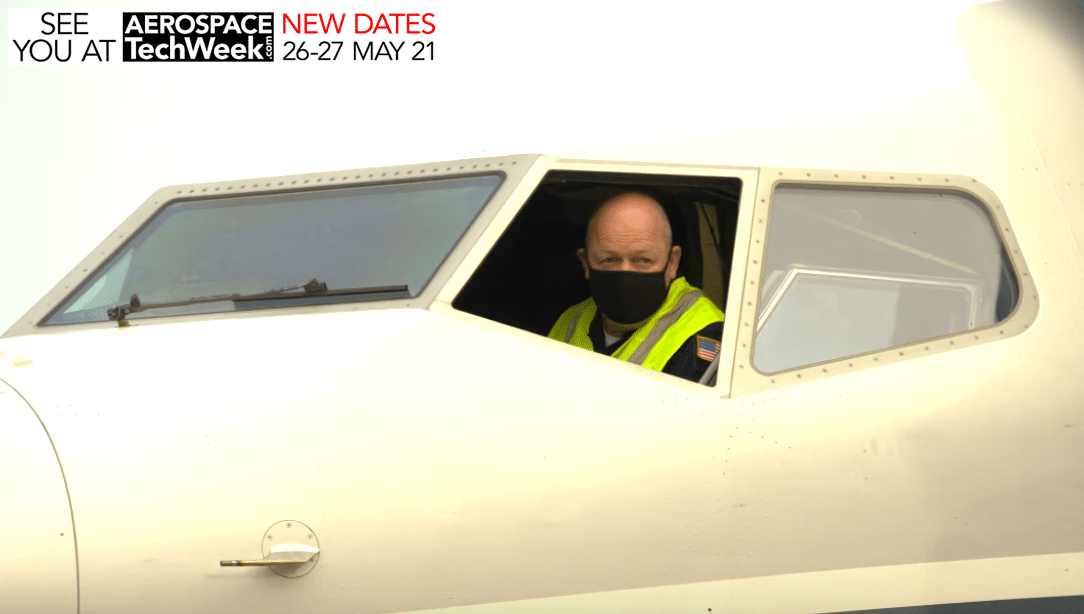Administrator Steve Dickson fulfilled his promise to pilot the Boeing 737 MAX before the Federal Aviation Administration (FAA) approves the aircraft’s return to service.
Dickson’s flight took two hours and included a number of scenarios to demonstrate the proposed software and design changes to the aircraft’s automated flight control system. Dickson, along with FAA Deputy Administrator Dan Elwell, completed the new recommended pilot training for the aircraft on Tuesday.
While Dickson’s flight is an important milestone, a number of key steps remain in the FAA’s evaluation of Boeing’s proposed changes to the aircraft’s flight control system and training.
A copy of Dickson’s opening remarks at a news briefing in Seattle following the flight are included below.
The FAA will not speculate about how long it will be until the aircraft is returned to passenger service. As we have stated throughout our work on the 737 MAX, the agency is following a deliberate process and will take the time it needs to thoroughly review Boeing’s work. We will lift the grounding order only after FAA safety experts are satisfied that the aircraft meets certification standards.
The remaining tasks include:
Flight Standardization Board (FSB) Report – A Joint Operations Evaluation Board (JOEB) recently met for nine days to review Boeing’s proposed training for 737 MAX flight crews. The JOEB was comprised of civil aviation authorities from the United States, Canada, Brazil, and the European Union. The results of this evaluation will be incorporated into the draft FAA Flight Standardization Board (FSB) report, which will be posted for public comment in the near future. The FAA will publish a final FSB report after reviewing and addressing public comments on the draft FSB Report.
Final Design Documentation and Technical Advisory Board (TAB) Report – The FAA will review Boeing’s final design documentation to evaluate compliance with all FAA regulations. The multi-agency TAB will also review the final Boeing submission and issue a final report prior to a final determination of compliance by the FAA.
Continued Airworthiness Notification to the International Community (CANIC) & AD – The FAA will issue a CANIC providing notice of pending significant safety actions and will publish a final AD that addresses the known issues for grounding. The AD will advise operators of required corrective actions before aircraft may re-enter commercial service.
FAA Rescinds Grounding Order – This marks the official ungrounding of the aircraft, pending completion by operators of the work specified in the AD, along with any required training.
Certificates of Airworthiness – The FAA will retain its authority to issue airworthiness certificates and export certificates for all new 737 MAX airplanes manufactured since the grounding. The FAA will perform in-person, individual reviews of these aircraft.
Operator Training Programs – The FAA will review and approve training programs for all Part 121 operators.
These actions are applicable only to U.S. air carriers and U.S.-registered aircraft. While our processes will inform other civil aviation authorities, they must take their own actions to return the Boeing 737 MAX to service for their air carriers. The FAA will ensure that our international counterparts have all necessary information to make a timely, safety-focused decision.
Text of FAA Administrator Steve Dickson’s opening remarks at a news briefing following his flight aboard the 737 MAX on Wednesday, Oct. 30, in Seattle.
Good morning and thank you for joining us today.
Shortly after I took the helm at the FAA, I made a promise that I would fly the 737 MAX and that I wouldn’t sign off on its return to service until I was comfortable putting my family on it.
I took the same training that the Joint Operations Evaluation Board looked at during its work at London Gatwick Airport in recent days. This was followed by a session in the 737 MAX simulator, during which I had the opportunity to experience a variety of problems that presented the relevant emergencies that might occur.
Today, I flew a similar flight profile in the airplane.
I want to make it clear that my flight was separate from the official certification process that’s still underway by the FAA.
I’m fortunate to be surrounded by some of the top aviation safety experts in the world to advise me on the engineering aspects of this project.
But I’m a pilot, and my lens into the world of aviation has been my decades of experience in the front of the airplane. It was important to me to experience the training and the handling of the aircraft firsthand, so I can have the most complete understanding possible as we continue to move forward with the process.
As you know, we posted a Notice of Proposed Rulemaking for an Airworthiness Directive that would address various safety issues that we and our international partners identified during the last several months. The comment period on that NPRM closed on September 21, and we are now reviewing and responding to those comments before posting a final rule.
We expect to take the input from the JOEB and include that in a Draft Flight Standardization Board report, which should be posted for comment in the near future.
I know you’ve heard me say this before, but the FAA continues to take a thorough and deliberate approach in our review of Boeing’s proposed changes to the 737 MAX. We are in the home stretch, but that doesn’t mean we are going to take shortcuts to get it done by a certain date.
The FAA — I — will not approve the plane for return to passenger service until I’m satisfied that we’ve adequately addressed all of the known safety issues that played a role in the tragic loss of 346 lives aboard Lion Air Flight 610 and Ethiopian Airlines Flight 302.
Not a day goes by that I and my colleagues don’t think about the victims and their families, and our solemn responsibility to get this right. And we will get it right.
